Papers by Nicholas Hudson

Intramuscular fat percentage (IMF%) is an important trait to the beef industry, but the mechanism... more Intramuscular fat percentage (IMF%) is an important trait to the beef industry, but the mechanisms that underpin the variation are not entirely clear. We have analysed genome-wide mRNA expression profiles in LM muscle biopsies from two separate cattle experiments. Firstly, samples from a time course of the development of Wagyu x Hereford (high marbling) and Piedmontese x Hereford (low marbling) animals (3 each cross) on the same diet were profiled. A set of genes whose expression appeared most likely to be related to the differences in marbling was identified. The genes included CIDEA, ADIG, S100G, PCK1, PLIN1, FABP4, ADIPOQ, PSL1, AGPAT2, DGAT2, CIDEC and TUSC5, many of which are involved in the synthesis and storage of triacylglycerides (TAG). Secondly, samples from 48 Brahman steers were profiled and IMF% was measured at slaughter. We investigated the correlation between each of the genes on the array and the IMF% across the 48 animals. The genes identified in the first analysis ...

Abstract Text: Understanding genetic relatedness between individuals, sire groups and breeds unde... more Abstract Text: Understanding genetic relatedness between individuals, sire groups and breeds underpins genomic selection and GWAS. Here, we describe a new estimate of genetic relatedness using normalized compression distance (NCD). Clustering of Sheep breeds inferred by NCD broadly reflects SNP correlation using standard multi-dimensional scaling. The clustering appears consistent with country of origin and population history. For example, the 4 British sheep meat breeds (Poll Dorset, Southdown, Suffolk and White Suffolk) clearly cluster with each other, but separate to unrelated breeds (Border Leicester, Merino and Texel). We show that the compression-based relationship matrix (CRM) and the genomic relationship matrix (GRM) are closely related. The quadratic relationship between pairwise NCD (CRM) and pairwise SNP correlation (GRM) implies CRM will perform better with closely related individuals, while the converse is true for GRM. For example, CRM resolves Merino from Poll Merino ...
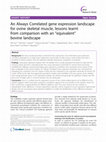
BMC Research Notes
BACKGROUND: We have recently described a method for the construction of an informative gene expre... more BACKGROUND: We have recently described a method for the construction of an informative gene expression correlation landscape for a single tissue, longissimus muscle (LM) of cattle, using a small number (less than a hundred) of diverse samples. Does this approach facilitate interspecies comparison of networks? FINDINGS: Using gene expression datasets from LM samples from a single postnatal time point for high and low muscling sheep, and from a developmental time course (prenatal to postnatal) for normal sheep and sheep exhibiting the Callipyge muscling phenotype gene expression correlations were calculated across subsets of the data comparable to the bovine analysis. An "Always Correlated" gene expression landscape was constructed by integrating the correlations from the subsets of data and was compared to the equivalent landscape for bovine LM muscle. Whilst at the high level apparently equivalent modules were identified in the two species, at the detailed level overlap be...
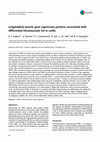
Animal : an international journal of animal bioscience, 2015
Intramuscular fat (IMF) can improve meat product quality through its impact on flavour and juicin... more Intramuscular fat (IMF) can improve meat product quality through its impact on flavour and juiciness. High marbling cuts can command premium prices in some countries and grading systems, but there is substantial cost involved in choosing to grain feed animals in an effort to deposit more IMF. There would be value in developing methods to predict predisposition to 'marble' well. Unfortunately, the biological mechanisms underpinning marbling remain a mystery: the key adipocyte cell populations have not been defined, there are no reliable DNA markers, no known (if any) causal mutations and gene expression analyses in the main have tended to characterise increases in expression of end-point fat metabolism proteins such as the fatty acid-binding proteins. To shed light on expression-based markers of marbling potential, we contrasted LD gene expression in high IMF Wagyu cross animals with a low IMF Piedmontese cross at various time points. The expected divergence in the fat metabo...
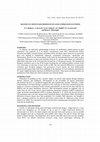
To improve our molecular understanding of bovine fat metabolism, global patterns of gene expressi... more To improve our molecular understanding of bovine fat metabolism, global patterns of gene expression were explored in 5 fat depots: subcutaneous rump (SC), intermuscular (Inter), intramuscular (IMF), omental (Omen) and kidney (Kid). All depots share conserved co-expression gene sets relating to fundamental adipocyte cytoskeletal architecture, metabolism and inflammation. However, the various depots could clearly be discriminated from each other by gene expression. Differences in fatty acid saturation between SC and the other depots are reflected by differential expression of the SCD gene that encodes the Δ 9 desaturase enzyme. The fundamental lipogenic machinery such as the ACACA gene encoding the rate limiting synthetic enzyme acetyl coA carboxylase is expressed at lower levels in IMF. We also detected differences in expression consistent with divergent lipogenic fuel preferences. Across depots, the most differentially expressed (DE) genes align with those published in the literature for non-ruminants, illustrated by SC rump's highly divergent expression of HOXA10 and DLK1. These genes are likely markers for populations of pre-adipocytes whose properties vary between depots.

PloS one, 2012
The processes that drive tissue identity and differentiation remain unclear for most tissue types... more The processes that drive tissue identity and differentiation remain unclear for most tissue types. So are the gene networks and transcription factors (TF) responsible for the differential structure and function of each particular tissue, and this is particularly true for non model species with incomplete genomic resources. To better understand the regulation of genes responsible for tissue identity in pigs, we have inferred regulatory networks from a meta-analysis of 20 gene expression studies spanning 480 Porcine Affymetrix chips for 134 experimental conditions on 27 distinct tissues. We developed a mixed-model normalization approach with a covariance structure that accommodated the disparity in the origin of the individual studies, and obtained the normalized expression of 12,320 genes across the 27 tissues. Using this resource, we constructed a network, based on the co-expression patterns of 1,072 TF and 1,232 tissue specific genes. The resulting network is consistent with the kn...
Background: Besides having an impact on human health, the porcine muscle fatty acid profile deter... more Background: Besides having an impact on human health, the porcine muscle fatty acid profile determines meat quality and taste. The RNA-Seq technologies allowed us to explore the pig muscle transcriptome with an unprecedented detail. The aim of this study was to identify differentially-expressed genes between two groups of 6 sows belonging to an Iberian 6 Landrace backcross with extreme phenotypes according to FA profile.
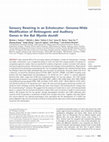
G3 (Bethesda, Md.), 2014
Bats comprise 20% of all mammalian species and display a number of characteristics, including tru... more Bats comprise 20% of all mammalian species and display a number of characteristics, including true flight, echolocation, and a heightened ability to resist viral load that uniquely position this group for comparative genomic studies. Here we searched for evidence of genomic variation consistent with sensory rewiring through bat evolution. We focused on two species with divergent sensory preferences. Myotis davidii is a bat species that echolocates and possesses dim- but not daylight-adapted vision whereas the black flying fox (Pteropus alecto) has highly developed day vision but does not echolocate. Using the naked mole rat as a reference, we found five functional genes (CYP1A2, RBP3, GUCY2F, CRYBB1, and GRK7) encoding visual proteins that have degenerated into pseudogenes in M. davidii but not P. alecto. In a second approach genome-wide codon usage bias (CUB) was compared between the two bat species. This CUB ranking systematically enriched for vision-related (CLN8, RD3, IKZF1, LAM...

Journal of Experimental Biology, 2009
We investigated the effect of prolonged immobilisation of six and nine months duration on the mor... more We investigated the effect of prolonged immobilisation of six and nine months duration on the morphology and antioxidant biochemistry of skeletal muscles in the amphibian aestivator Cyclorana alboguttata. We hypothesised that, in the event of atrophy occurring during aestivation, larger jumping muscles were more likely to be preserved over smaller non-jumping muscles. Whole muscle mass (g), muscle cross-sectional area (CSA) (microm(2)), water content (%) and myofibre number (per mm(2)) remained unchanged in the cruralis muscle after six to nine months of aestivation; however, myofibre area (microm(2)) was significantly reduced. Whole muscle mass, water content, myofibre number and myofibre CSA remained unchanged in the gastrocnemius muscle after six to nine months of aestivation. However, iliofibularis dry muscle mass, whole muscle CSA and myofibre CSA was significantly reduced during aestivation. Similarly, sartorius dry muscle mass, water content and whole muscle CSA was significantly reduced during aestivation. Endogenous antioxidants were maintained at control levels throughout aestivation in all four muscles. The results suggest changes to muscle morphology during aestivation may occur when lipid reserves have been depleted and protein becomes the primary fuel substrate for preserving basal metabolic processes. Muscle atrophy as a result of this protein catabolism may be correlated with locomotor function, with smaller non-jumping muscles preferentially used as a protein source during fasting over larger jumping muscles. Higher levels of endogenous antioxidants in the jumping muscles may confer a protective advantage against oxidative damage during aestivation; however, it is not clear whether they play a role during aestivation or upon resumption of normal metabolic activity.
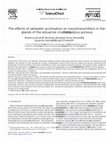
Regulatory Peptides, 2007
Introduction: Most avian and reptilian salt glands display marked phenotypic plasticity when anim... more Introduction: Most avian and reptilian salt glands display marked phenotypic plasticity when animals are exposed to hyperosmotic conditions. In addition, the activity of most salt glands is under considerable control by the nervous system and nerves containing cholinergic, adrenergic and peptidergic neurotransmitters have been identified in avian and reptilian salt gland tissues. The present study sought to determine whether the salt glands of the estuarine crocodile, Crocodylus porosus contain the peptidergic neurotransmitters SP, CGRP, VIP, and PACAP and the gaseous neurotransmitter, NO. In addition, we sought to determine whether there was any evidence for the adaptation of the C. porosus salt gland nervous system to hyperosmotic conditions. Methods: Salt glands from freshwater-and saltwater-acclimated C. porosus hatchlings were sectioned and examined immunohistochemically for neurotransmitters within the tissue. Results: Neurons containing SP, CGRP, VIP, PACAP and NO synthase were identified within C. porosus salt glands. There was no difference in the overall number (density) of neurons within SW-acclimated tissues when compared with FW-acclimated animals. However, there was a significant reduction in density of neurons containing SP and PACAP in SW-acclimated animals. Conclusion: C. porosus salt glands display phenotypic plasticity following exposure to hyperosmotic conditions. In addition to cholinergic and adrenergic neurons, they contain a variety of peptidergic neurotransmitters and the gaseous neurotransmitter NO. Additionally, there appears to be some evidence of acclimation of the nervous system of C. porosus to hypersaline conditions, although the functional significance of these changes remains to be determined.
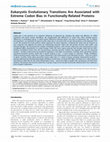
PLoS ONE, 2011
Codon bias in the genome of an organism influences its phenome by changing the speed and efficien... more Codon bias in the genome of an organism influences its phenome by changing the speed and efficiency of mRNA translation and hence protein abundance. We hypothesized that differences in codon bias, either between-species differences in orthologous genes, or within-species differences between genes, may play an evolutionary role. To explore this hypothesis, we compared the genome-wide codon bias in six species that occupy vital positions in the Eukaryotic Tree of Life. We acquired the entire protein coding sequences for these organisms, computed the codon bias for all genes in each organism and explored the output for relationships between codon bias and protein function, both within-and between-lineages. We discovered five notable coordinated patterns, with extreme codon bias most pronounced in traits considered highly characteristic of a given lineage. Firstly, the Homo sapiens genome had stronger codon bias for DNAbinding transcription factors than the Saccharomyces cerevisiae genome, whereas the opposite was true for ribosomal proteins -perhaps underscoring transcriptional regulation in the origin of complexity. Secondly, both mammalian species examined possessed extreme codon bias in genes relating to hair -a tissue unique to mammals. Thirdly, Arabidopsis thaliana showed extreme codon bias in genes implicated in cell wall formation and chloroplast function -which are unique to plants. Fourthly, Gallus gallus possessed strong codon bias in a subset of genes encoding mitochondrial proteinsperhaps reflecting the enhanced bioenergetic efficiency in birds that co-evolved with flight. And lastly, the G. gallus genome had extreme codon bias for the Ciliary Neurotrophic Factor -which may help to explain their spontaneous recovery from deafness. We propose that extreme codon bias in groups of genes that encode functionally related proteins has a pathwaylevel energetic explanation.
PLoS ONE, 2009
Background: Despite modern technologies and novel computational approaches, decoding causal trans... more Background: Despite modern technologies and novel computational approaches, decoding causal transcriptional regulation remains challenging. This is particularly true for less well studied organisms and when only gene expression data is available. In muscle a small number of well characterised transcription factors are proposed to regulate development. Therefore, muscle appears to be a tractable system for proposing new computational approaches.

PLoS Computational Biology, 2009
Transcription factor (TF) regulation is often post-translational. TF modifications such as revers... more Transcription factor (TF) regulation is often post-translational. TF modifications such as reversible phosphorylation and missense mutations, which can act independent of TF expression level, are overlooked by differential expression analysis. Using bovine Piedmontese myostatin mutants as proof-of-concept, we propose a new algorithm that correctly identifies the gene containing the causal mutation from microarray data alone. The myostatin mutation releases the brakes on Piedmontese muscle growth by translating a dysfunctional protein. Compared to a less muscular non-mutant breed we find that myostatin is not differentially expressed at any of ten developmental time points. Despite this challenge, the algorithm identifies the myostatin 'smoking gun' through a coordinated, simultaneous, weighted integration of three sources of microarray information: transcript abundance, differential expression, and differential wiring. By asking the novel question ''which regulator is cumulatively most differentially wired to the abundant most differentially expressed genes?'' it yields the correct answer, ''myostatin''. Our new approach identifies causal regulatory changes by globally contrasting co-expression network dynamics. The entirely data-driven 'weighting' procedure emphasises regulatory movement relative to the phenotypically relevant part of the network. In contrast to other published methods that compare co-expression networks, significance testing is not used to eliminate connections.
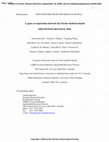
Physiological Genomics, 2006
We present the application of large-scale multivariate mixed-model equations to the joint analysi... more We present the application of large-scale multivariate mixed-model equations to the joint analysis of nine gene expression experiments in beef cattle muscle and fat tissues with a total of 147 hybridizations, and exploring 47 experimental conditions or treatments. Using a correlation-based method, we constructed a gene network for 822 genes. Modules of muscle structural proteins and enzymes, extracellular matrix, fat metabolism and protein synthesis were clearly evident. Detailed analysis of the network identified groupings of proteins on the basis of physical association. For example, expression of three components of the z-disk, MYOZ1, TCAP and PDLIM3, was significantly correlated. In contrast, expression of these z-disk proteins was not highly correlated with the expression of a cluster of thick (myosins) and thin (actin and tropomyosins) filament proteins, or titin, the third major filament system. However, expression of titin was itself not significantly correlated with the cluster of thick and thin filament proteins and enzymes.
Physiological Genomics, 2011

Journal of Herpetology, 2013
ABSTRACT Metabolic depression is a common strategy used during stressful environmental conditions... more ABSTRACT Metabolic depression is a common strategy used during stressful environmental conditions, allowing animals to survive for prolonged periods on limited endogenous fuel stores; yet, the mechanisms involved in regulating metabolic depression are poorly understood. The endogenous opioid system (EOS) has been implicated in the regulation of metabolism during hibernation in vertebrates, and we hypothesized that opioids also may regulate metabolic rate during aestivation in the Green-Striped Burrowing Frog, Cyclorana (Litoria) alboguttata (Gunther, 1867). When incubated in the presence of opioid agonists, liver and muscle tissue slices from C. alboguttata underwent tissue- and agonist-specific metabolic depression, and the effect of opioid agonists on metabolism was more pronounced in tissue slices from aestivating animals. Gene transcript levels for the delta-opioid receptor remained constant in the brain and muscle of aestivating C. alboguttata compared with that of active frogs, as did brain transcript levels of the opioid receptor XOR1. The results of this study demonstrate that opioids can influence metabolic rate in isolated tissues from C. alboguttata. The maintenance of key opioid receptor gene transcript levels in tissues of aestivating frogs suggests that despite the energetic costs, maintenance of receptor abundance is important. We propose that the maintenance of opioid receptor abundance during aestivation in C. alboguttata is indicative of a role for the EOS in the regulation of metabolic rate during aestivation.

Journal of Comparative Physiology A, 2005
This study examined the effect of prolonged inactivity, associated with aestivation, on neuromusc... more This study examined the effect of prolonged inactivity, associated with aestivation, on neuromuscular transmission in the green-striped burrowing frog, Cyclorana alboguttata. We compared the structure and function of the neuromuscular junctions on the iliofibularis muscle from active C. alboguttata and from C. alboguttata that had been aestivating for 6 months. Despite the prolonged period of immobility, there was no significant difference in the shape of the terminals (primary, secondary or tertiary branches) or the length of primary terminal branches between aestivators and non-aestivators. Furthermore, there was no significant difference in the membrane potentials of muscle fibres or in miniature end plate potential (EPP) frequency and amplitude. However, there was a significant decrease in evoked transmitter release characterised by a 56% decrease in mean EPP amplitude, and a 29% increase in the failure rate of nerve terminal action potentials to evoke transmitter release. The impact of this suite of neuromuscular characteristics on the locomotor performance of emergent frogs is discussed.






Uploads
Papers by Nicholas Hudson